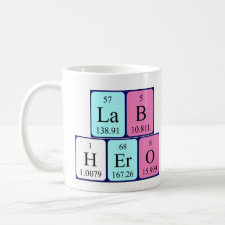
Authors: Nematollahzadeh A, Lindemann P, Sun W, Stute J, Lütkemeyer D, Sellergren B
Article Title: Robust and selective nano cavities for protein separation: An interpenetrating polymer network modified hierarchically protein imprinted hydrogel.
Publication date: 2014
Journal: Journal of Chromatography A
Volume: 1345
Page numbers: 154-163.
DOI: 10.1016/j.chroma.2014.04.030
Alternative URL: http://www.sciencedirect.com/science/article/pii/S0021967314005822
Abstract: In the present work, we report a novel method for the reinforcement of hierarchically structured molecularly imprinted polymer (MIP) for the separation of human serum albumin (HSA) and immunoglobulin G (IgG) proteins under pressure driven flow conditions. The template proteins (HSA or IgG) were first physically adsorbed at their isoelectric point on the surface of wide pore silica particles. Thereafter, the pore system was filled with a monomer solution and polymerized to form a lightly crosslinked polyacrylamide network covering the protein template. In order to enhance the rigidity of the hydrogels, different type of crosslinkers such as ethylene glycol dimethacrylate (EGDMA), 3,4-dihydroxyphenethylamine (DA) and methylene-bis-acrylamide (MBA), at least partially interpenetrated into the initially made acrylamide base hydrogel leading to formation of an interpenetrating polymer network (IPN). Then the silica matrix was removed to leave highly porous and reinforced MIP. TGA together with FT-IR and TEM analysis supported the interpenetration of the secondary crosslinkers in the initially formed polymer matrix. The compression property of the modified hydrogels as a function of degree of swelling was in the following order: DA > EGDMA > MBA-IPN-modified hydrogel. Batch binding assay verified the capability of the IPN modified MIPs to capture the target proteins. Moreover, solid phase extraction, HPLC and SDS-PAGE revealed that the EGDMA modified MIP could selectively capture and separate the proteins from human serum or fermentation broth
Template and target information: protein, human serum albumin, HSA, immunoglobulin G, IgG
Author keywords: Protein separation, interpenetrating polymer network, molecularly imprinted polymer, Mechanical strength



Join the Society for Molecular Imprinting

New items RSS feed
Sign-up for e-mail updates:
Choose between receiving an occasional newsletter or more frequent e-mail alerts.
Click here to go to the sign-up page.
Is your name elemental or peptidic? Enter your name and find out by clicking either of the buttons below!
Other products you may like:
 MIPdatabase
MIPdatabase









